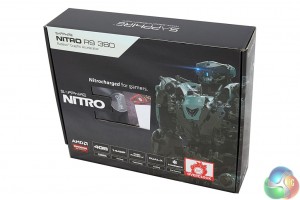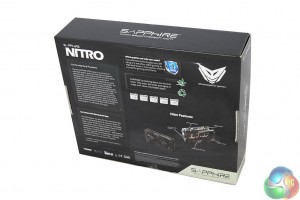The Sapphire box artwork features another futuristic robotic render with a little window to showcase the Nitro sticker on one of the fans.
The rear of the box highlights the Nitro cooler in the form of a breakdown diagram.
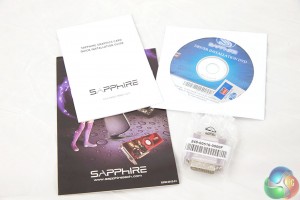
The bundle contains a video adapter, literature, and a software/driver disc. We always advise people to get the latest driver direct from AMD's website as the driver on the optical disc may be a couple of revisions older.
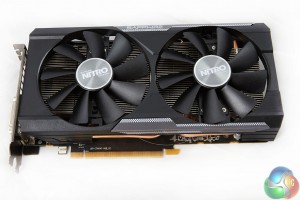
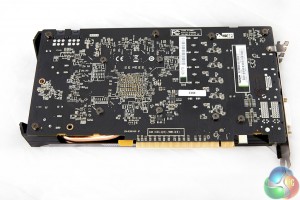
Sapphire's Nitro cooler is very understated which will appeal to the enthusiast audience who have an inherent adverse reaction to flashing lights and bright colours. The PCB is black, to match the matte finish of the cooler.
The card measures in at almost 240mm, meaning that compatibility and installation issues are unlikely.
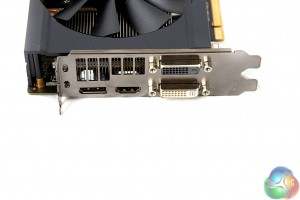
The card is equipped with two DVI ports, one DVI-I and one DVI-D. There is a full sized HDMI 1.4 and DisplayPort underneath an exhaust vent.
There is no HDMI 2.0 on this card, although that is unlikely to annoy HTPC gamers with a 4K TV as the R9 380 is not strong enough to push playable frame rates at a 3840×2160 resolution. It is, however, an annoyance to users who want to occasionally connect their system to their big 4K TV for high-resolution media consumption from the likes of Netflix.
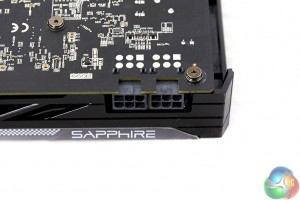
The card takes power from two six pin PCIe power connectors.
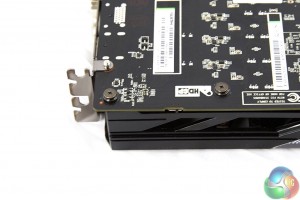
There are no crossfire connectors on the R9 380 Nitro – as this is based on the R9 285, it has bridgeless Crossfire support. Simply plug in two of these cards into a Crossfire capable motherboard and Catalyst Control Center will enable Crossfire options. TrueAudio is also fully supported.
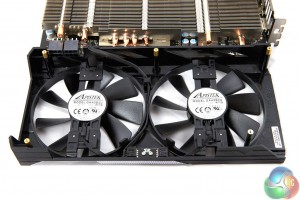
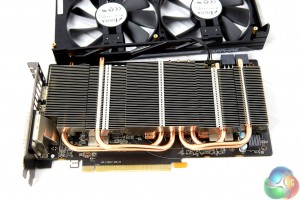
The plastic shroud can be easily removed showing the large heatsink underneath in all its glory. It is a fairly chunky cooler.
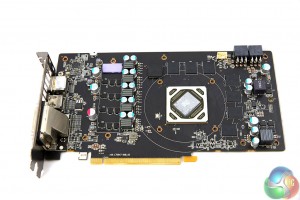
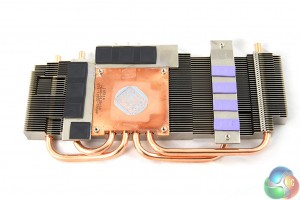
The four thick copper heatpipes run directly into a big copper base which cools the Antigua (Tonga) core – these heatpipes run into aluminium fins on either side of the GPU core to quickly disperse the heat. Memory and VRMs are actively cooled by the heatsink as well.
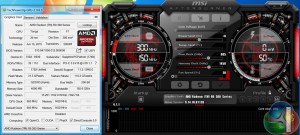
GPU-Z depicts an overview of the Sapphire R9 380 Nitro – which is basically the same as the last generation R9 285, with higher core and memory clocks. AMD's Antigua Pro (Tonga) core is built on the 28nm process. There are 32 ROP's, 112 Texture units and 1792 Stream Processors. The 4GB of GDDR5 memory runs at 1,450mhz (5.8Gbps effective) and is connected via a 256 bit memory interface. The core is running at 985mhz – slightly faster than AMD's reference clocks.
 KitGuru KitGuru.net – Tech News | Hardware News | Hardware Reviews | IOS | Mobile | Gaming | Graphics Cards
KitGuru KitGuru.net – Tech News | Hardware News | Hardware Reviews | IOS | Mobile | Gaming | Graphics Cards


